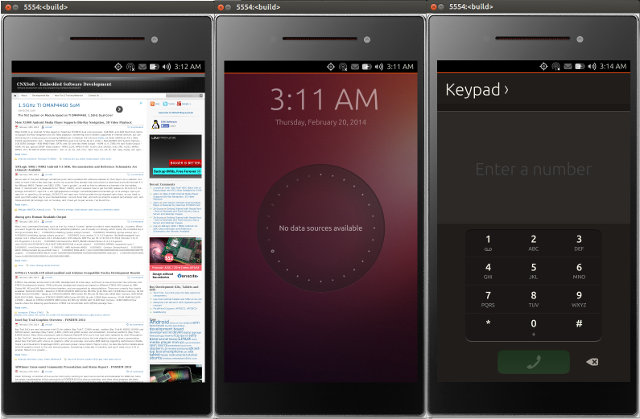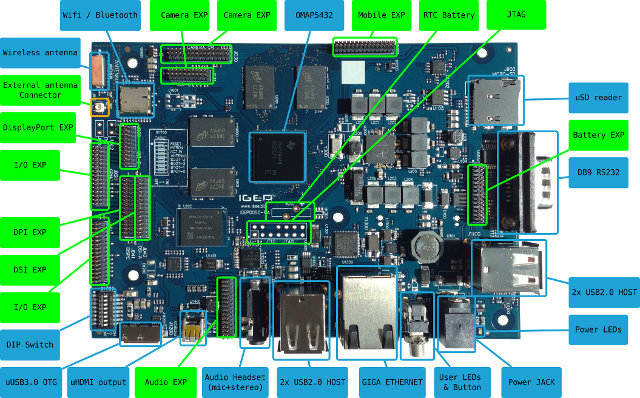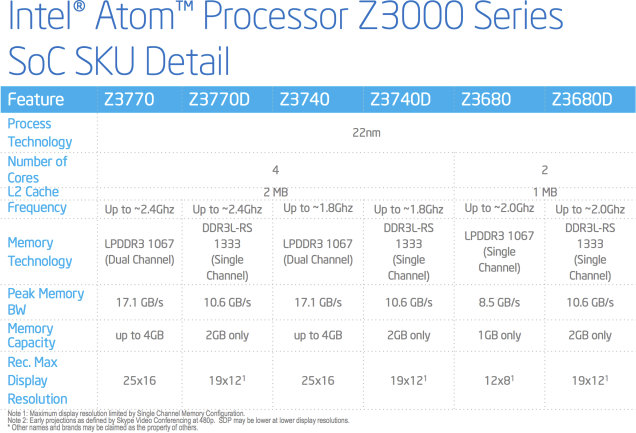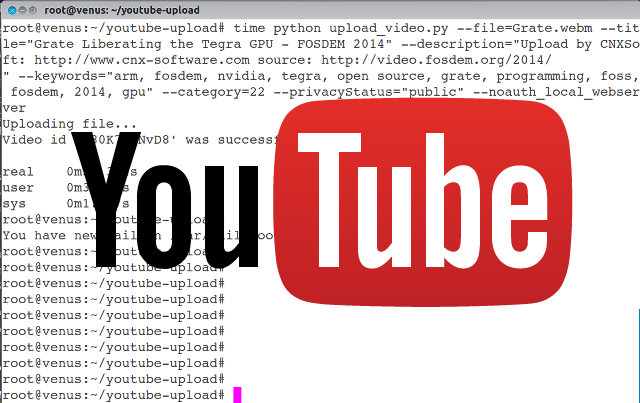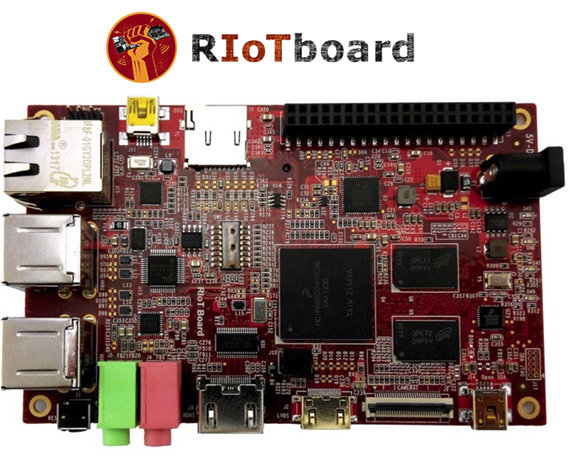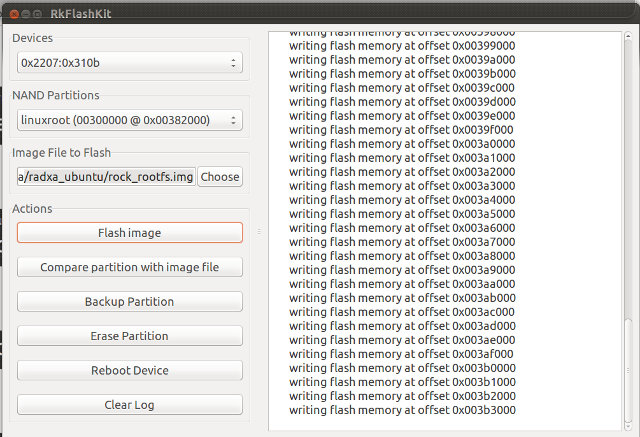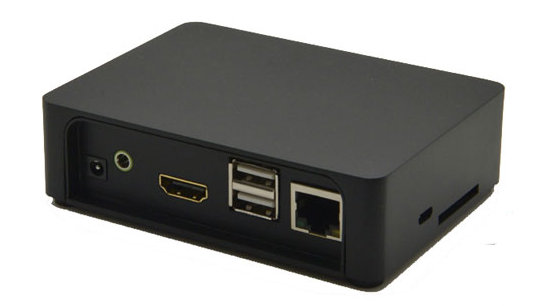Canonical has just announced Meizu (China) and Bq (Europe) will be the first manufacturers to launch Ubuntu Touch phones at the end of 2014. But if you want to try Ubuntu Touch, and don’t own a Google Nexus 4 or 7, or simply don’t want to flash Ubuntu Touch to your devices, you can do so using Ubuntu Touch x86 Emulator in your computer running Ubuntu , or in an Ubuntu Virtual machine in Virtualbox or VMWare. The emulator has been available since last November, but Ricardo Salveti announced an updated version, the first public preview, with the following changes: Better TLS handling (not using the Android slots, but using pthread_set/getspecifics instead) Qt packages compatible with OpenGL ES 2.0 available at https://launchpad.net/~rsalveti/+archive/qt-gles-test It has been tried on Ubuntu Trusty (14.04), but I could run it just fine on Ubuntu Saucy (13.10), by following the instructions below in a terminal: Download […]
IGEPv5 OMAP5432 Development Board is Now Available for 149 Euros
ISEE IGEPv5 development board announced in October 2013, and powered by Texas Instrument OMAP5432 dual core Cortex A15 + dual core Cortex M4 SoC, POWERVR SGX544MP2 and Vivante GC320 GPUs is now available for as low as 149 Euros. There are two versions: “IGEPv5 OMAP5432 Communication Edition” for hobbyists with limited support, and “IGEPv5 OMAP5432” directly supported by ISEE. There’s also “IGEPv5 Custom Design” if you have specific requirements for your product. Hardware specifications are shared by both versions but with significant differences (CE = IGEPv5 OMAP5432 Community Edition, ISEE = IGEPv5 OMAP5432): SoC – Texas Instruments OMAP5432 dual core Cortex A15 up to 1.5 GHz (CE) or 2 GHz (ISEE), dual core Cortex M4, with POWERVR SGX544 dual-core GPU, Vivante GC320 GPU, and TMS320DMC64x DSP System Memory CE – 1GB DDR3 @ 1066 MHz ISEE – Up to 4 GB DDR3 RAM expandable to 4GB Storage CE – No eMMC, […]
Intel Bay Trail Z3700 Series Overview, Benchmarks, Hardware, Documentation and Linux Support
After seeing the discussion about ARM vs x86 (Bay trail) for the future Dragon Pyra open source game console, I’ve realized many people, including myself, do not know about the different resources available to develop hardware and software for Intel Bay Trail SoCs for tablets such as Atom Z3740 and Z3770, so I decided to have a look. Intel Atom Bay Trail Z3700 Series Overview Intel Z3600 series and Z3700 series are respectively dual core and quad core Bay Trail-T SoCs for Android and Windows 8 tablets. There are 4 quad core models: Z3740, Z3740D, Z3770, and Z3770D, and 2 dual core processors: Z3680 and Z3680D. The dual core versions are reserved for Android only, and there’s no product page on Intel for now, so I’ll focus this post on Z3700 series only. I have no idea what the “D” in Z3740D is for, except it;’s not related to Desktop, […]
How to Upload YouTube Videos with the Command Line in Linux
Like many people, I access Internet via an ADSL connection at home. ADSL stands for “Asymmetric Digital Subscriber Line”, with Asymmetric being the key word here, as it just mean your download speed will be (much) higher than your upload speed. My ISP promises a theoretical 10 Mbps download speed, and 512 Kbps upload speed, and this is pretty close in reality: Data Rate: 10240 (downstream), 509 (upstream) kbps. Assuming a 265MB video, in the very best case (63 KB/s), it would take 1 hour and 12 minutes to upload a video to YouTube, but in practice it’s often closer to 2 or 3 hours. If it’s a video you’ve shot yourself, and copied inside your computer, there’s very little you can do, except processing the video with tools such as HandBrake to make it smaller before upload. But if the video files are located somewhere in the Internet, and […]
$74 RIoTBoard Development Board Features Freescale i.MX 6Solo
RIoTBoard, which stands for “Revolutionizing the Internet of Things Board”, is a new Android & GNU/Linux development board sold by Element14 /Newark powered by Freescale i.MX6Solo Cortex A9 processor. The board also features 1GB DDR3 RAM, 4GB eMMC and plenty of ports including Gb Ethernet, HDMI, and more. The board can be used to design netbooks , nettops, mobile internet devices (MIDs), PDAs, portable media players (PMP) with HD video capability, portable navigation devices (PNDs), industrial control and test and measurement (T&M), and single board computers (SBCs). RIoTBoard specifications: SoC – Freescale i.MX 6Solo ARM Cortex A9 MPCore Processor @ 1 GHz with Vivante GC880 and GC320 GPUs for 3D & 2D graphics, and HD video processing unit. System Memory – 1GB DDR3 RAM Storage – 4GB eMMC, microSD and SD card slots Video Output – HDMI, LVDS, and parallel RGB interfaces Audio I/O – Analog headphone/microphone, 3.5mm audio jack […]
Linaro 14.01 Release with Linux Kernel 3.13 and Android 4.4.2
The first release of the year, Linaro 14.01, is now out with Linux Kernel 3.13 (baseline), Linux Kernel 3.10.28 (LSK), Android 4.4.2, and Ubuntu Linaro 14.01. The most important part of this release is support for Arndale Octa, which makes big.LITTLE processing code available to a low cost platform. Android 4.4.x is now on par with Android 4.3 in terms of support. Linaro has also decided to provide quarterly stable released with GCC, and Linaro GCC 4.7-2014.01 is the first quarterly stable release with the next one planned with Linaro 14.04. Here are the highlights of this release: Linaro Stable Kernel (LSK) 3.10.28-2014.01 with latest version of GTS patch set for big.LITTLE, and Android support Linux Linaro 3.13-2014.01: gator version 5.17 updated linaro-android-3.13-merge topic by John Stultz, the “Revert “PM / Sleep: Require CAP_BLOCK_SUSPEND to use wake_lock/wake_unlock” patch included uprobes v4 updated big-LITTLE-pmu topic from ARM Landing Team (LT) updated […]
Getting Started with Raxda Rock – How to Generate and Flash Ubuntu Saucy Server and Desktop Images
I’ve already written a guide showing how to build and install Android in Radxa Rock. Today I’m going to build the Linux kernel, generate a Ubuntu server images based latest Ubuntu Linaro server release, flash the image to the NAND flash, and show how to install LXDE or XFCE desktop environment. If you are just interested in installing one of the latest supported images, you can download Android, dual boot (Android/Ubuntu), Ubuntu ALIP, and Router images for Radxa Rock @ http://dl.radxa.com/rock/images/, and skip “build” and “generate” instructions, and just follow the flashing instructions below. All steps in this tutorial will be done in Ubuntu 13.10, and lots of the instructions below follow hwswbits blog and Ubuntu Radxa Wiki. Build the Linux kernel Let’s start by building the Linux kernel. I’m assuming you’ve already install development tools in Ubuntu (e.g. apt-get install build-essentials). You can refer to the list at the beginning […]
$69.95 NanoPC-T1 by FriendlyARM Features Samsung Exynos 4412 SoC
If you like low cost boards by Hardkernel such as ODROID-U3, but the add-ons required, and/or shipping costs put you off, an alternative will soon be available thanks to FriendlyARM NanoPC-T1, a tiny computer designed and manufactured by CoreWind Tech FriendlyARM Guangzhou, and powered by Samsung Exynos 4412 quad core Cortex A9 SoC with 1GB RAM, and 4GB built-in flash. FriendlyARM NanoPC specifications: SoC – Samsung Exynos 4412 quad core Cortex-A9 @ 1.5GHz + Mali-400MP4 GPU System Memory – 1GB DDR3 RAM, 32bit data bus Storage – 4GB eMMC Flash + SD Card slot Connectivity – 10/100M Ethernet (RJ45) Video Output – HDMI Audio – 3.5mm Audio Out jack USB – 1x micro USB OTG, 2x USB 2.0 host ports Expansions and I/Os: UART – 4 x TTL UART LCD – TFT LCD interface, support Capacitive/Resistive touch driver 2x Digital sensor input CMOS CAMERA Interface MIPI interface – Support HD […]


